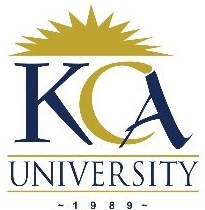 UNIVERSITY EXAMINATIONS: 2017/2018
UNIVERSITY EXAMINATIONS: 2017/2018
EXAMINATION FOR THE DEGREE OF BACHELOR OF SCIENCE IN
INFORMATION TECHNOLOGY/ BACHELOR OF SCIENCE IN
INFORMATION AND COMMUNICATIONS TECHNOLOGY
BIT 3107/BCT 3101: WIRELESS NETWORKS TECHNOLOGIES
FULL TIME/PART TIME/DISTANCE LEARNING
DATE: AUGUST, 2018 TIME: 2 HOURS
INSTRUCTIONS: Answer Question One & ANY OTHER TWO questions.
QUESTION ONE [30 MARKS]
a) Discuss in detail how RFID works and the applications of RFID. 8 Marks
b) Describe the association process of a wireless client 6 Marks
c) Briefly list and discuss any four (4) advantages of Satellite communication over the other
types of communication. 4 Marks
d) Discuss the role of the Base Station Subsystem in cellular wireless networks
6 Marks
e) Compare and contrast Bluetooth and IEEE 802.11b 6 Marks
QUESTION TWO [20 MARKS]
a) Describe how the following spread spectrum techniques operate:
(i) Direct Sequence Spread Spectrum (DSSS) 3 Marks
(ii) Frequency Hoping Spread Spectrum (FHSS) 3 Marks
b) Describe briefly the six major transmission functions that are required in long range
communications. 6 Marks
c) The 802.11 standard states that each conformant wireless LAN must provide nine
services. These services are divided into two categories: five distribution services and four
station services. The distribution services relate to managing ce11 membership and interacting
with stations outside the cell. In contrast, the station services relate to activity within a single cell
and deal with station mobility as they enter and leave cells, attaching themselves to and detach
themselves from base stations.
(i) Describe any four distribution services. 4 Marks
(ii) Describe each of the four station services. 4 Marks
QUESTION THREE [20 MARKS]
a) Describe the categorization of:
(i) Communication satellites 3 Marks
(ii) Satellite orbits 3 Marks
b) Despite the great promise, what are the key limitations associated with wireless systems?
4 Marks
c) With the aid of simple diagrams, sketch and show the minimum distance between the
centers of the cells that use the same frequency in the following cases:
(i) frequency re-use for 4-cell re-use pattern 3 Marks
(ii) frequency re-use for 7-cell re-use pattern 3 Marks
d. Explain the concept of data rate shifting as used in IEEE 802.11b wireless LAN standard.
4 Marks
QUESTION FOUR [20 MARKS]
a) State five benefits of the GSM technology. 5 Marks
b) Two enterprise-level encryption mechanisms specified by 802.11i are certified as WPA
and WPA2 by the Wi-Fi Alliance: Temporal Key Integrity Protocol (TKIP) and Advanced
Encryption Standard (AES). Discuss how these enhance security. 7 Marks
c) Explain briefly three features of
(i) circuit switching. 4 Marks
(ii) Packet switching 4 Marks
QUESTION FIVE [20 MARKS]
a) “Multiple access” is a phrase commonly used with communication systems.
(i) Define the term “Multiple Access”. 1 Mark
(ii) Identify the key differences between the following types of multiple access:
FDMA; TDMA; CDMA. 6 Marks
b) With the aid of diagrams, explain how satellites operate. 6 Marks
c) State three satellite link performance factors. 3 Marks
d) State any four features of Bluetooth network. 4 Marks